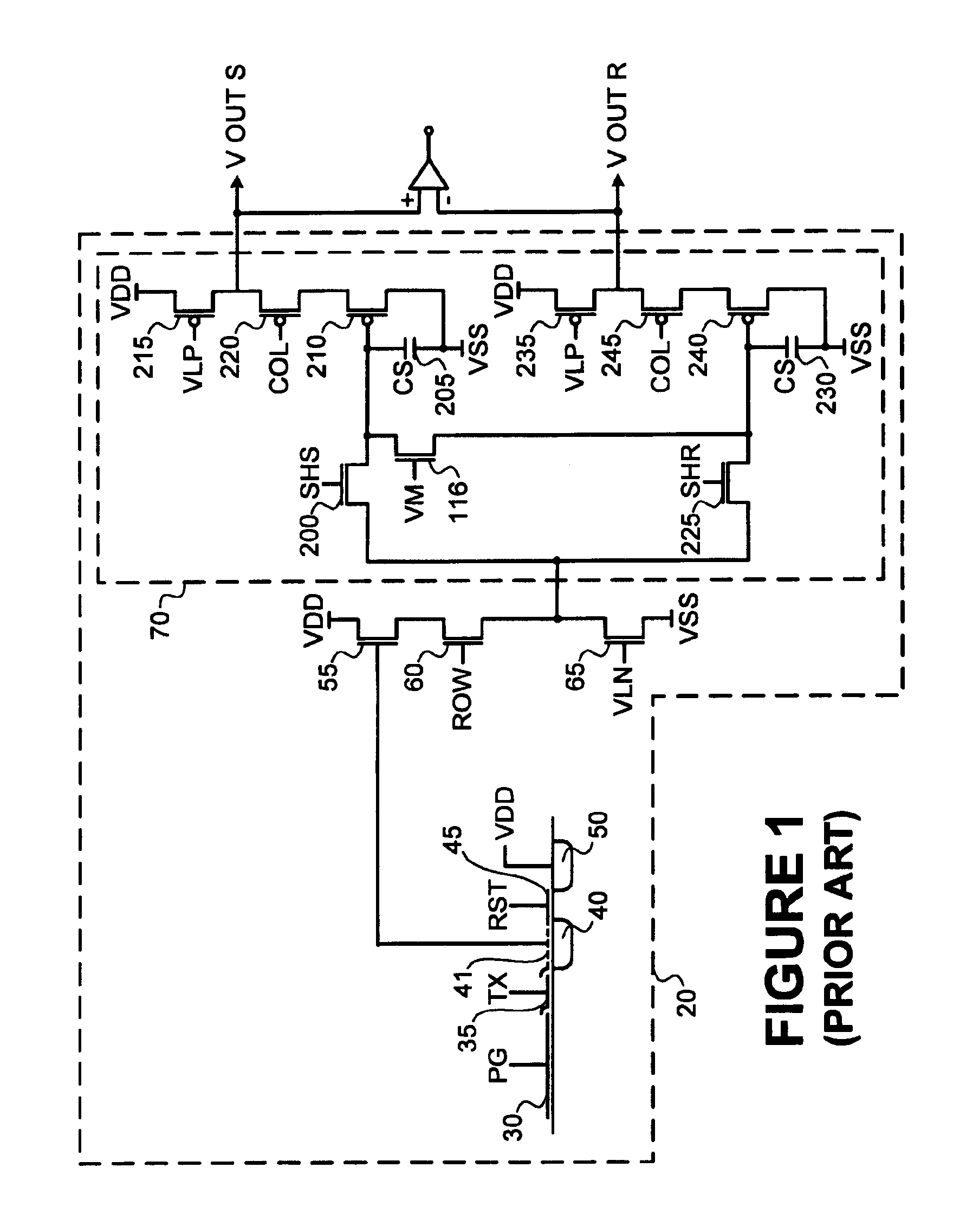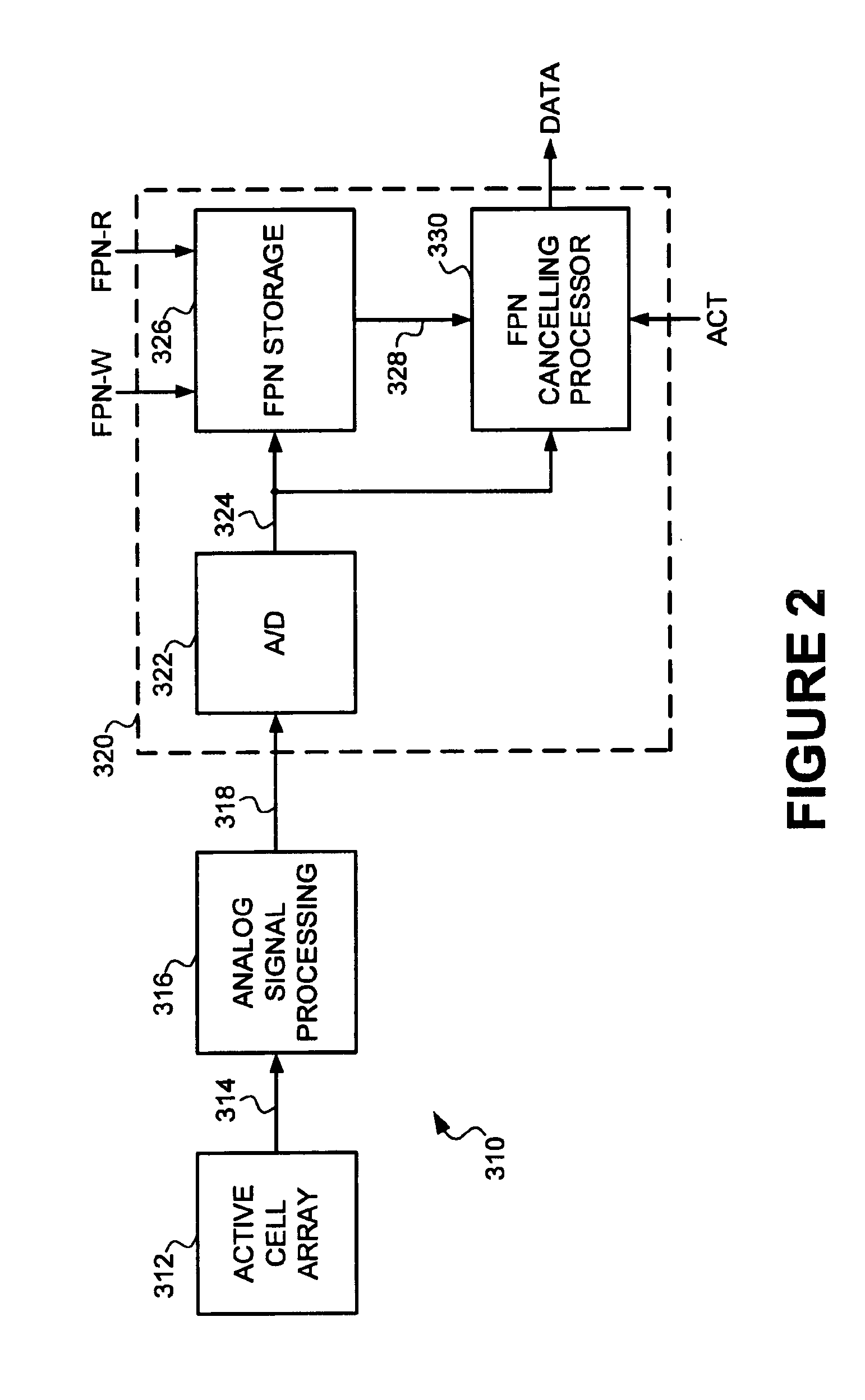Method and apparatus for digital column fixed pattern noise canceling for a CMOS image sensor
a technology of image sensor and fixed pattern, applied in the field of mos image sensor, can solve the problems of decreasing the fixed pattern noise canceling rate of the above circuit, increasing the gain of the signal amplifier, and generating column fixed pattern noise, so as to achieve the effect of free of fixed pattern nois
- Summary
- Abstract
- Description
- Claims
- Application Information
AI Technical Summary
Problems solved by technology
Method used
Image
Examples
Embodiment Construction
[0019]A CMOS image sensor and readout circuit 310 formed according to the present invention is illustrated in FIG. 2. An active cell array 312 includes a number of pixels organized into rows and columns. The active cell array 312 includes at least one “reference row.” The reference row may be placed at the top or bottom of the active array, or somewhere in between. The reference row is created by using a light shield or black layer to cover the cells of the reference row from light. Thus, the only signal that should be generated from the sensors of the reference row is a noise or dark signal. During the readout process, the exposure time of the reference row is the same as it is for the rest of the rows of the active cell array.
[0020]Signals from the pixels in cell array 312 are read out through a series of reading lines 314 by analog signal processing circuitry 316. A cell array and analog signal processing of the signals are described in more detail in a copending application enti...
PUM
 Login to View More
Login to View More Abstract
Description
Claims
Application Information
 Login to View More
Login to View More - R&D
- Intellectual Property
- Life Sciences
- Materials
- Tech Scout
- Unparalleled Data Quality
- Higher Quality Content
- 60% Fewer Hallucinations
Browse by: Latest US Patents, China's latest patents, Technical Efficacy Thesaurus, Application Domain, Technology Topic, Popular Technical Reports.
© 2025 PatSnap. All rights reserved.Legal|Privacy policy|Modern Slavery Act Transparency Statement|Sitemap|About US| Contact US: help@patsnap.com



